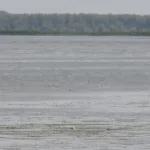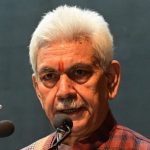Reflecting on the bygone era, Zareef Ahmad Zareef, Kashmir’s prominent poet and historian fondly recalls the vibrant celebrations during the 40 days of ‘Chillai-Kalan,’ the harshest winter phase that begins each year on December 21.
The Chilla-i-Kalan marks the most frigid phase of winter in Kashmir, spanning 40 days, from December 21 to January 29 annually. Following this, the region experiences the 20-day Chillai Khurd, lasting from January 30 to February 18, succeeded by the shorter 10-day Chillai Bachha, observed from February 19 to February 28.
Zareef says that ‘Chillai-Kalan’ was not seen as a burden; rather, it was a time for communal joy marked by visits to Harissa shops and communal gatherings in Hamams. He emphasizes that the history of ‘Chillai-Kalan’ spans over a millennium, and the people of Kashmir traditionally embraced the season by staying indoors.
In Downtown, where artisans were predominant, individuals would often remain indoors, while in villages, people engaged in activities such as sheep rearing, carpet weaving, mat making, and other handicrafts.
“Back then, people celebrated this season joyously as they were largely self-sufficient, not reliant on external support like today’s society. With fewer infections and diseases, individuals would adapt their diet to the prevailing weather conditions,” Zareef Ahmad said.
While highlighting the social scenes during ‘Chillai-Kalan’ in Srinagar, he mentioned that people used to frequent Harissa shops and Hamams. Evenings saw poets narrating their verses in closed rooms, accompanied by tea and Kehwa served at these intimate gatherings.
Taking a trip down memory lane, Zareef said until half a century ago, there were four renowned Harissa shops in Srinagar, located in Aali Kadal, Saraf Kadal, Fateh Kadal in Downtown, and Saribal in the upper city and other regions.
The renowned Kashmiri poet remarked, “Chillai Kalan is the season when Harissa-makers engage in brisk business. People queue up at the crack of dawn in freezing temperatures for the hot dish at traditional shops,” he explained.
Zareef says that Islam spread in the valley, their ancestors from Iran began referring to this 40-day harsh winter period as Chillai Kalan, replacing the term ‘Sishshar Mass’ previously used by Buddhists. In the Persian tradition, the night of December 21, the longest of the year, is celebrated as Shab-e-Yalda (Night of Birth) or Shab-e-Chelleh.
“Kashmir has a deep influence from Iran, often called the small ‘Iran of Asia’ (Iran-i-Sageer), with the valley maintaining a profound connection both traditionally and religiously with its culture and traditions.”
He said that Chillai Kalan is a Persian term where Chilla means 40 days and Kalan means bigger. “In the past, people prepared for harsh winters in late summer, ensuring self-sufficiency. Each house had a special space called ‘Wagga’ for drying vegetables, fish, and pulses in the sunshine,” the noted poet said.
Reflecting on his childhood, he recalled witnessing snowfall up to two stories of his house. “People from Dal interiors would come and clear the snow from rooftops,” he said.
Zareef highlighted that Srinagar used to experience 3 to 4 feet deep snowfall, even more in the higher reaches.
“The architecture of homes back then was much more suitable to face this winter period. Kangri (firepot) and Hamams were the primary sources of warmth during winter. People in the upper reaches would burn firewood in their mud houses,” he said.
Zareef says now the situation has changed due to climatic change and modern gadgets replacing traditional Kangri and other systems. The history of Chillai Kalan has now become a folk tale for our new generation.
“People should not underestimate Chillai Kalan and take proper care. Precautions are necessary when using electronic gadgets and electric blankets,” he added.
The 40-day Chillai Kalan is followed by ‘Chillai Khurd’ and ‘Chillai Bacha,’ during which day temperatures begin to rise.
Another distinguished historian of Kashmir, Khalid Bashir Ahmad, elucidated the significance of ChillaiKalan, a term derived from the Persian words ‘chilla’ and ‘kalan,’ denoting a solitary retreat observed in various forms among different communities.
“By the end of February, winter in Kashmir concludes, making way for spring. ChillaKaatna, a ritual of complete isolation for spiritual or professional pursuits, becomes prominent during this time,” Khalid explained.
He recounted that historically, Kashmiris would confine themselves to their homes during harsh winters, a practice known as ChillaKaatna.
As per the old Kashmiri calendar, the Great Winter begins on 6 or 7 Poh, corresponding to 21 or 22 December.
The twelve months in the Kashmiri calendar include Tsithur, Vahekh, Zeth, Har, Shravun, Badrupeth, Ashid, Kartikh, Monjhor, Poh, Maag, and Phagun. Khalid said people historically prepared for winters, especially ChillaiKalan, ensuring provisions for woolens, Pheran Charcoal for Kangri, wood for Hamam, and ample food supplies.
In the past, heavy snowfall often isolated Kashmir from the rest of the world for months, leading to a preference for stocked dry vegetables, which later became cherished delicacies in Kashmiri cuisine.
“Locally, ChillaiKalan is a time for leisure, enjoyment, and celebration. People celebrate with harissa followed by a cup of nun chai (salty beverage),” Khalid added.
Harisa vendors in the old city of Srinagar witness early morning crowds, with enthusiasts enjoying the delicacy on the spot, while a few take it home for the family.
Special dishes savored during this period include nadir gade (fish with lotus stem), razmahgogji (kidney beans with turnip), batakpalak (duck with spinach), nadir gogji (lotus stem with turnip), phari (smoked fish), ho-gade (dried fish), ale hachi (dried bottle gourd), etc.
Khalid recalled that before the advent of digital entertainment, snowfall was a time of great enjoyment for children. The joy of walking on fresh snow, making footprints, engaging in snowball fights, and building snowmen was unparalleled.
He said children eagerly awaited ‘ChillaiKalan’ for the abundant snow and extended recess from school. Winter vacations are typically aligned with Christmas and extended until the first week of March.
Woolens were considered a luxury, and garments, especially pheran, were crafted from a cotton fabric known as shaitanter and falalein (flannel). “Wooden sandals called khraav were common footwear, even in the city.
“In villages, pulhor, made of paddy straw, prevented slipping on frozen snow,” Khalid added. During long winter nights, listening to stories of local folklore heroes, narrated by elder family members, became a common pastime for children,” he said.
Khalid says that professional storytellers held villages captive with their narrations of daastan (folklore), featuring indigenous tales and Persian and Arabic fables.
Abdul Majeed Rather, a 60-year-old from HMT Srinagar said with the onset of winter in Kashmir, people used to gear up with Chalai-Kalan preparations.
Explaining various aspects of ChilaiKalan, he said with its onset, people used to prepare and purchase Kangris, blankets, and heavy woolen.
Rather, in villages, people were rearing sheep, weaving carpets, preparing mates, and doing other works in the season.
“I along with his friends would often visit Dal Lake, which would freeze to an extent that people would enjoy playing traditional games on it,” he added.





